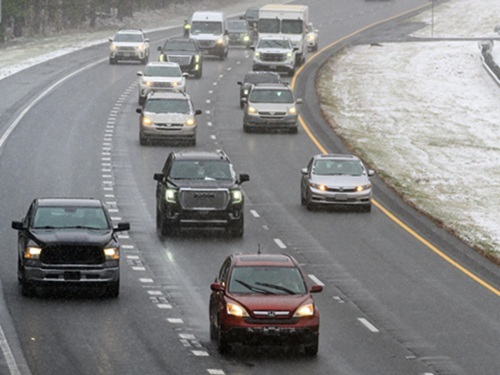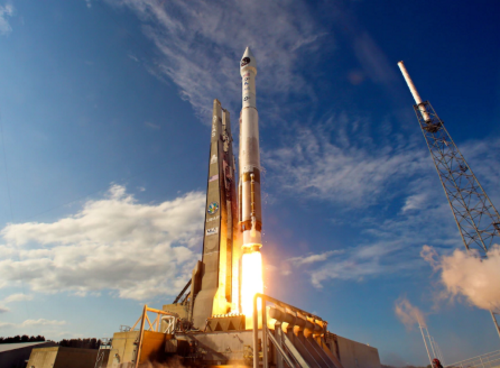Federal Aviation Administration recently activated a system that can track space launches and reentries in near-real time through the National Airspace System. The agency said this new capability increases safety for all airspace users and helps it more efficiently managing air traffic during space operations.
[Above photo by Pat Corkery/United Launch Alliance]
The FAA said its new Space Data Integrator or SDI prototype automates the delivery of vehicle-related telemetry data to its Air Traffic Control System Command Center, vastly improving the agency’s situational awareness of where the vehicle is as it travels to space or as it returns to the Earth.

Currently, the FAA has to close airspace for extended periods of time when a launch or reentry vehicle travels through the National Airspace System.
Now SDI will allow the FAA to more dynamically manage airspace and minimize the impact on other airspace users. In addition to existing tools, the FAA also can use SDI to manage air traffic more efficiently as a space operation progresses and address contingencies in the event of an anomaly during a mission.
“This is a critical tool as the number of users of our already busy airspace increases,” explained Steve Dickson, FAA’s administrator, in a statement.

“With this capability, we will be able to safely reopen the airspace more quickly and reduce the number of aircraft and other airspace users affected by a launch or reentry,” he said.
Telemetry data provided via SDI includes vehicle position, altitude, speed, and if it deviates from its expected flight path. It also displays tracking for the vehicle during its full flight and allows the FAA to monitor whether the vehicle is performing as planned. In addition, the SDI capability is able to display and share aircraft hazard areas that may potentially contain falling debris from a launch or reentry vehicle.
The FAA also recently began using time-based procedures and dynamic windows as tools to more efficiently manage launch or reentry operations in the National Airspace System.
The agency said that shows “great promise” in terms of reducing the length of airspace closures from an average of more than four hours per launch to just more than two hours. As the SDI capability evolves, it will help the FAA reopen the airspace even more quickly, the agency noted.

The activation of the SDI system follows an agreement the FAA signed with the U.S. Air Force on June 15 aimed at eliminating “red tape” governing commercial space activities at ranges operated by the U.S. Space Force, while at the same time re-emplacing safety standards to protect the public.
The agreement recognizes common safety standards for FAA-licensed launch and reentry activities that occur on, originate from, or return to Cape Canaveral Space Force Station in Florida and Vandenberg Space Force Base in California.
In 2020, the FAA licensed 39 commercial space launches – the most in the agency’s history – and those two U.S. Space Force ranges supported 24 of them. Overall, the FAA safely managed 45 space launches and reentries into the National Airspace System in 2020 and the agency expects that number to exceed 70 in 2021.
 Nation
Nation
Registration Open for AASHTO’s Winter Rail Meeting
December 19, 2025 Nation
Nation

